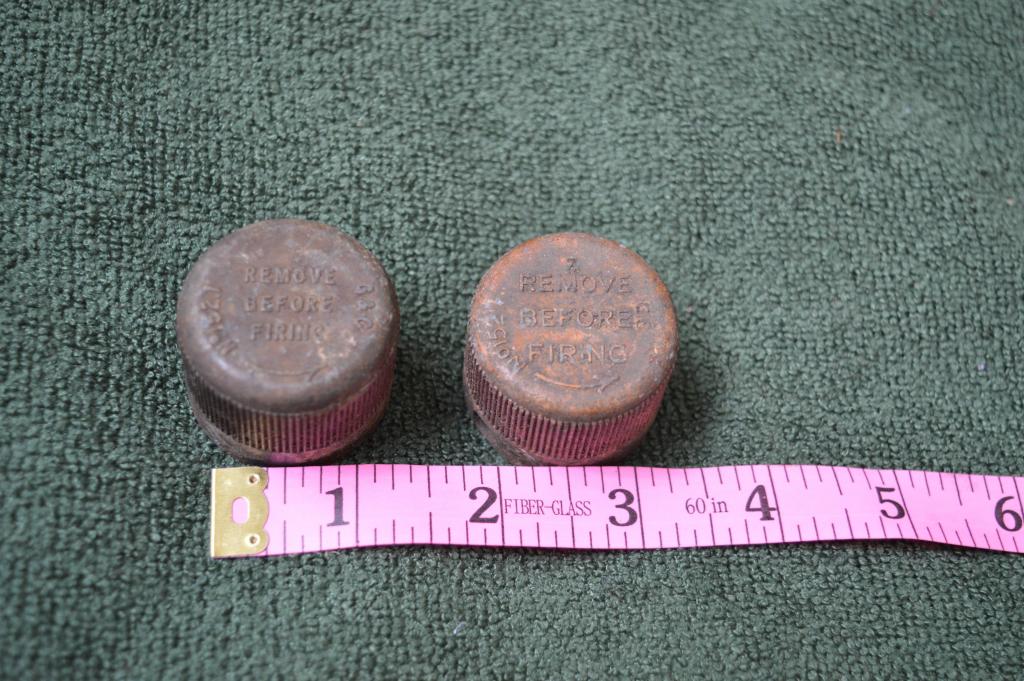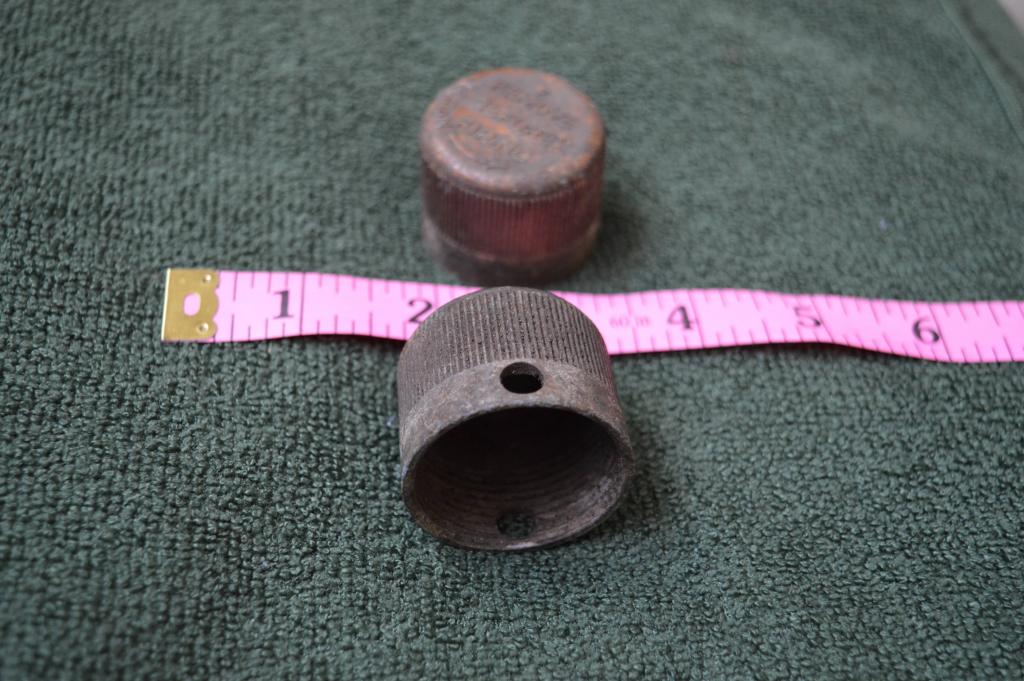-
You're right BP, they do have inbuilt safety devices just to prevent that sort of accident. Incidentally, there is also a drill for removing a live if it fails to exit the tube.
While the bomb might seem to rattle down the tube like a stone, it is fairly well cushioned by the air it compresses in the tube on its way down. On the way UP, there's a hard light green coloured 'driving' band that is opened and spreads very slightly by the explosive force to ensure that there is minimal space between the bomb and the tube that might allow excess propellant gas to escape. That's why bore measurements are quite critical and logged in the barrel history sheet/log book at regular intervals.
As BAR will confirm. There's an almost pleasant BOOOOOOMPH when you're standing close to the gun pit. But when you're close to the muzzle, as the loader is, it's ear shattering. That's why the loader drops the round in, he rolls around,drops head below the muzzle and hands over ears - as if by force of habit.
Mortars cause more casualties than any of the other Infantry weapons. Devastating until you can pin point where the gun pit is
Last edited by Peter Laidler; 10-19-2017 at 05:03 PM.
-
Thank You to Peter Laidler For This Useful Post:
-
10-19-2017 04:50 PM
# ADS
Friends and Sponsors

-
Advisory Panel



Originally Posted by
Flying10uk

if a mortar round was dropped down the tube the wrong way is it almost certain to explode in the tube
Absolutely not. They are armed by an inertia system that activates when the speed of firing out of the barrel takes place. If they'd go off when dropped, they couldn't be brought forward in armored vehicles. If you look up the mechanism of a fuze, the little springs and such will be evident.
-
Thank You to browningautorifle For This Useful Post:
-
-
Contributing Member


We watched a well drilled crew at Northam Army camp in 1971 as Cadets watching a fire power demonstration by the regulars the 3" guys set up their mortar at which point they fired off 10 rounds and were honestly starting to get ready to dismantle the mortar before the first round hit we watched them just disappear into the clouds admittedly it was a cloudy day but disappear they did.
Had I not been sitting their watching it I would not have believed it, a most satisfying booomph as PL says and an even better boom from the rounds detonation they did inform us a 3" mortar round has a 100' lethal zone anywhere in that circle when the 3" arrives and your toast others may be killed further out by shrapnel but if your'e in that circle............................
They also put on a squad demo with SLR's and the M-60 and quite a healthy lot of lead was slung down range by them the M-60 was using 1-4 tracer so for us cadets it was noisy and well worth watching.
-
-
Advisory Panel



Originally Posted by
CINDERS

dismantle the mortar before the first round hit
An old gag performed for women and children...the guns are set at max elevation so the ammo has it's best hang time in the air. Our dismount drills demanded 45 seconds to "Area clear" and everything just went into a pile in the truck. Always good for a laugh...we never actually used the guns like that...
Yes, the lethality of the 81mm bombs is no joke. 60's were great for support too...
-
The Following 2 Members Say Thank You to browningautorifle For This Useful Post:
-
Getting back to the original post etc, whilst having a clear out found the end cap I mentioned, the two were together with the bottom half of a No69 grenade, believe it or not I found the the No69 part with my metal detector.......... only reason for it being found was a .303 case next to it, obvious a lot more No69 stuff about were I found it but will have to wait till they invent the bakerlite detector. I can still remember the place I found it, also the end caps below were from another location and the only two I ever found. Diameter is 1 3/8 " bit bigger than I thought but smaller than the 2" ones.
They are similar to the No69 grenade cap, but the thread is on these is at the bottom, the No69 grenade the thread is at the top of the cap.


Last edited by bigduke6; 10-25-2017 at 06:21 AM.
-
The Following 2 Members Say Thank You to bigduke6 For This Useful Post:
-
Advisory Panel


Yes, those cover the fuze so it doesn't take a bash... I expect they used a common and simple thread, as you suggest.
-
-
Legacy Member

Talking about 2" caps they used to leave the caps on HE rounds for certain firing conditions, I can remember some veteran telling me about this. I have also found blown 2" fuzes with the remains of the cap still in place.
-
-
Advisory Panel



Originally Posted by
Topfmine

leave the caps on HE rounds for certain firing conditions
Delay action? They'd go in deeper before detonation...?
-
Thank You to browningautorifle For This Useful Post:
-
Legacy Member

bigduke, you may well find that the thread of those caps is a BSP thread which as you probably know, confusingly, the nominal thread size does NOT equal the outside diameter of the thread. So, for example a 7/8 BSP thread is listed as having an outside thread diameter of 1.189" but in practice this will measure a little less.
-
-
Contributing Member


Those Bakelte detectors are on the restricted list.........along with Brass Magnets.
-
Thank You to muffett.2008 For This Useful Post:
















 PM
PM












